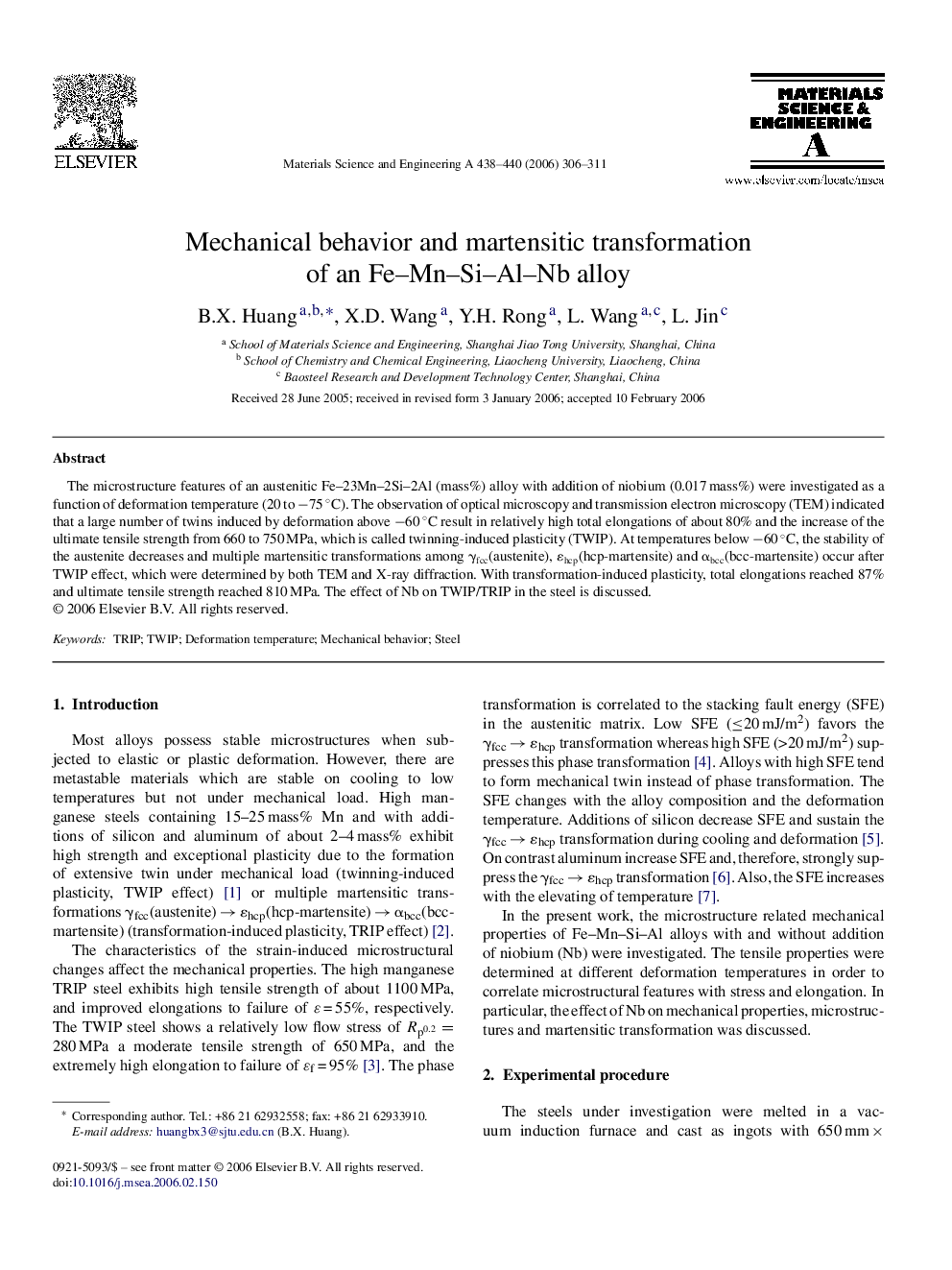| Article ID | Journal | Published Year | Pages | File Type |
|---|---|---|---|---|
| 1585006 | Materials Science and Engineering: A | 2006 | 6 Pages |
The microstructure features of an austenitic Fe–23Mn–2Si–2Al (mass%) alloy with addition of niobium (0.017 mass%) were investigated as a function of deformation temperature (20 to −75 °C). The observation of optical microscopy and transmission electron microscopy (TEM) indicated that a large number of twins induced by deformation above −60 °C result in relatively high total elongations of about 80% and the increase of the ultimate tensile strength from 660 to 750 MPa, which is called twinning-induced plasticity (TWIP). At temperatures below −60 °C, the stability of the austenite decreases and multiple martensitic transformations among γfcc(austenite), ɛhcp(hcp-martensite) and αbcc(bcc-martensite) occur after TWIP effect, which were determined by both TEM and X-ray diffraction. With transformation-induced plasticity, total elongations reached 87% and ultimate tensile strength reached 810 MPa. The effect of Nb on TWIP/TRIP in the steel is discussed.
